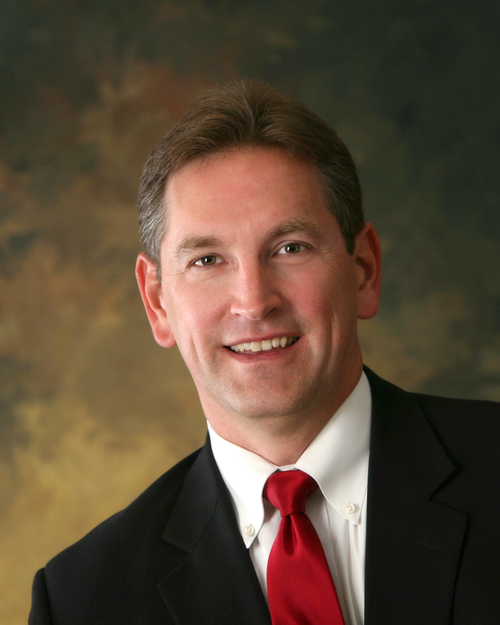
Scientific American recently published the responses they received from many US President Candidates regarding questions on science and scientific matters. In this post, I apply the skills we expect from the practice of good argument and scientific thinking to assess the questions and the responses.
Let’s focus on the “Innovation” question for this round.
Innovation
The Question
The question put to the candidates was this.
Science and engineering have been responsible for over half of the growth of the U.S. economy since WWII. But some reports question America’s continued leadership in these areas. What policies will best ensure that America remains at the forefront of innovation? [1]
The question begins with the premise that is encapsulated in reports like the 2002 Presidential Council of Advisers on Science and Technology (PCAST) statement on continued investment in US Research and Development: there are numerical measures that indicate that about half the economic growth since World War II is due to investments in science and engineering. This is a sensible and well-established premise … at least, well-enough to ask the question in the first place with the implication that science is quite important to the nation.
Scientific American doesn’t cite any of these alleged “reports” that question America’s continued leadership in such areas, but one could easily look around and find indicators of problems that are threats to such leadership. First of all, while the US stood relativity alone on the world stage in terms of economic integrity after World War II (Europe was decimated by that conflict and took decades to recover), that is no longer the case. Europe now has a healthy economy and powers like Russia have risen, ebbed, and risen again. China has emerged as a significant economic force, but is still establishing itself as a scientific force (that has changed substantially in the most recent 20 years, and for the positive). The same can be said of India. The US is playing on a more level playing field than it once did, as mathematics, fundamental natural sciences, and engineering are becoming more valued in countries that have developed or continue to develop more economic opportunity and freedom.
The US ranks unfavorably on notable individual measures of mathematical and scientific potential. For instance, the Organization for Economic Cooperation and Development (OECD) has assessed more and more countries over time on the abilities of students to perform in science or mathematics. In 2012, their report found that the US ranked 28th out of 65 countries in science, and 27th in mathematics [2]. This suggests, even among nations that are more developed like the US, that there is room to improve and there may even be a danger of falling further down the list, though it’s unclear how bad that actually might be (e.g. how far do you have to fall in rankings before economic growth is actually threatened?).
The question is then this: how would the candidates set policies to ensure that the US remains a leader in these areas? This is a question appropriate to a member of the government, especially a potential head of the Executive Branch with the ability to establish policy themes and interact with Congress to make such themes a priority, even if implementation is a further negotiation.
The Responses
The only responses to any of these questions came from Hillary Clinton (Democratic Party), Donald Trump (Republican Party), and Jill Stein (Green Party). In all cases, Gary Johnson (Libertarian Party) failed to turn in responses by the deadline. As a teacher, I have strong feelings about the inability to complete work by a deadline… especially work that bears so directly on the economic health and future of a nation of people.
Let’s look at the numbers behind the responses that the candidates gave. Clinton’s response was the longest, at 354 words. Trump’s response was 126 words in length, and Jill Stein’s was the shortest at 117 words in length. Of course, content matters more than verbosity. Nonetheless, one can already sense that some of the candidates thought more about this question than others [3].
Clinton’s response can be boiled down to this:
- There are core items that need attention to promote innovation in science and engineering: education; basic and applied research; commercialization of ideas (e.g. “technology transfer” from the public to the private sector)
This is an observation in line with what is known about the past successes in innovation, and seems a sound answer. She, of course, peppers in her own policy salt – STEM programs in schools, steady funding for research to ensure long-term planning, and “make it in America” as a way to benefit US people via US companies. However, this is just policy salt. Her core recipe framework involves three main areas she would need to address. This is astute, and consistent with what is known.
Trump’s response can be boiled down to this:
- Government should reduce barriers to entry to markets.
- There should be more investment in space programs and a “broad landscape of academia”
- Efforts to curtail budget spending should take care when it comes to money spent on science, engineering, and healthcare.
These are all reasonable observations, though the market comment captures only part of what is known about the portfolio that enabled the US to be a leader in science and engineering. The rest of his comments are policies regarding Federal spending, and do err on the side of protecting spending on research and development on basic research matters. It’s hard to argue with any of these, but lacked coherence which Clinton managed to capture quite well in her three-prong vision. This read more like jumping quickly into policy waters, less than understanding the issue before diving in. There is a lack of clear thought.
Stein’s response can be summarized as follows:
- Federal spending has a role to play in science and engineering, and finding more money for it would be good.
- Improved living and working conditions will free people to spend more time thinking about science and engineering issues.
Stein shows some of the least clarity in what is known to be necessary to promote science and engineering. Certainly, one cannot argue with her basic points – poverty is the enemy of education. But there is no vision here, and even less clarity of thought. She references her campaign platform without specifics, mentions some policy salt (cutting Pentagon spending, improving wages and sick leave), but seems more interested in these things than how to define a national framework for science and engineering.
In Summary
Clinton expresses a clear three-pronged view of what will strengthen the US’s ability to innovate in science and engineering: education, research spending, and commercialization of findings. She dashes in some of her own policy salt to show how she might address these. The other two respondents, Trump and Stein, fail to express a clear vision of the framework but do make some hits on some items, like market freedom and poverty as a challenge to a quality education. Those two, however, spend more time on the policy salt than the basic ingredients; they are more interested in the spice than the dish. Johnson never answered the question.
[1] http://www.scientificamerican.com/article/what-do-the-presidential-candidates-know-about-science/
[2] http://www.oecd.org/unitedstates/PISA-2012-results-US.pdf
[3] Yes, I understand that likely it was staff who responded to these questions. So while it may be true that the staff of one candidate might have put more work – and more words – into some responses, and done so more than the staff of other candidates, the reality is that when they speak they do so for the candidate. I attribute their words here as those of the candidate. If the candidate did not want it that way, they should have participated themselves. Of course, maybe they did. We cannot know for sure.


